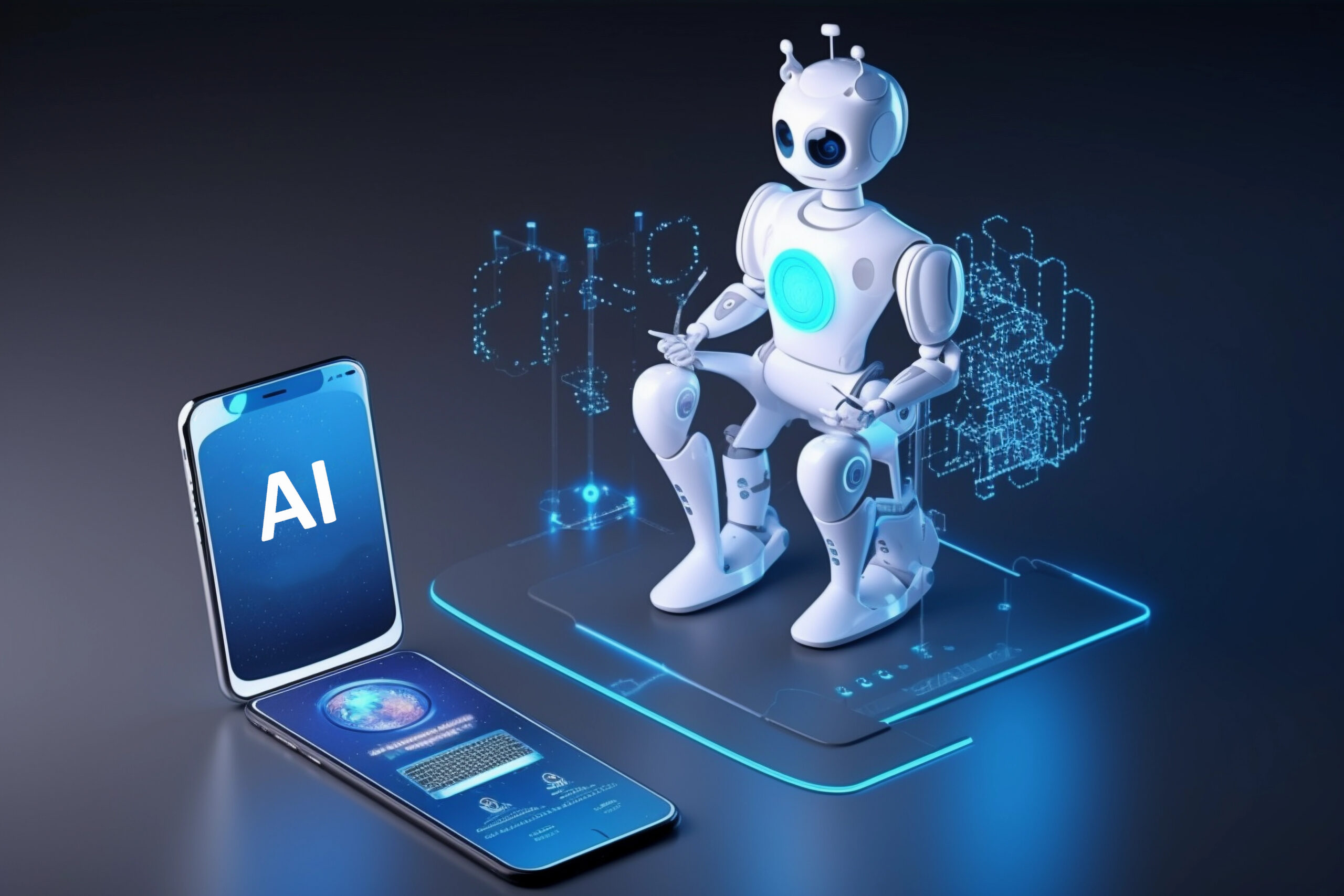Hugging Face, a company at the forefront of the AI revolution, has developed a powerful suite of tools and models designed to make AI more accessible, efficient, and innovative. In recent years, artificial intelligence (AI) has become an integral part of our lives, revolutionizing industries and transforming the way we interact with technology. Hugging Face’s AI toolbox has garnered significant attention from developers, researchers, and businesses alike, as it provides a comprehensive platform for building and deploying cutting-edge AI applications. In this article, we will dive deep into Hugging Face’s offerings, exploring how their tools and models are paving the way for groundbreaking advancements in the field of AI.
Hugging-Face’s success can be attributed to their commitment to open-source development and their focus on creating user-friendly tools that streamline the AI development process. By providing a centralized hub for AI resources, Hugging-Face has fostered a vibrant community of developers and researchers who collaborate, share knowledge, and push the boundaries of what is possible with AI. The company’s dedication to democratizing AI has made it possible for individuals and organizations of all sizes to harness the power of advanced AI technologies, regardless of their technical expertise or financial resources.
We strongly recommend that you check out our guide on how to take advantage of AI in today’s passive income economy.
Table of Contents
The Power of Transformers: Hugging Face’s Core Innovation
At the heart of Hugging Face’s AI toolbox lies the Transformer architecture, a groundbreaking deep learning model that has revolutionized natural language processing (NLP) and other AI domains. Transformers, first introduced in the paper “Attention Is All You Need” by Vaswani et al., have quickly become the go-to choice for a wide range of AI tasks, including language translation, text generation, sentiment analysis, and more. Hugging Face has embraced the power of Transformers and has built an extensive library of pre-trained models that developers can easily integrate into their projects.
One of the key advantages of Hugging-Face’s Transformer-based models is their ability to capture long-range dependencies and contextual information in sequential data, such as text. By leveraging the self-attention mechanism, Transformers can effectively process and understand the nuances of language, enabling more accurate and coherent results in NLP tasks. Hugging-Face’s implementation of Transformers, known as the Transformers library, has become the de facto standard for NLP researchers and practitioners worldwide.
The Transformers library offers a wide range of pre-trained models, including BERT (Bidirectional Encoder Representations from Transformers), GPT (Generative Pre-trained Transformer), and RoBERTa (Robustly Optimized BERT Pretraining Approach), among others. These models have been trained on massive amounts of diverse text data, allowing them to develop a deep understanding of language and its intricacies. By fine-tuning these pre-trained models on specific tasks or domains, developers can quickly create highly accurate and efficient AI applications without the need for extensive training from scratch.
Hugging-Face’s Transformer-based models have been used in numerous real-world applications, ranging from chatbots and virtual assistants to content generation and sentiment analysis. The versatility and effectiveness of these models have made them indispensable tools for businesses looking to leverage AI to improve their products, services, and customer experiences. With Hugging Face’s continuously expanding library of Transformer models and their commitment to pushing the boundaries of AI research, it is clear that Transformers will continue to play a pivotal role in shaping the future of AI.
Streamlining AI Development with Hugging Face’s Tools and Frameworks
In addition to their powerful Transformer models, Hugging Face offers a comprehensive suite of tools and frameworks designed to streamline the AI development process. These tools address various aspects of the AI workflow, from data preprocessing and model training to deployment and monitoring. By providing a unified platform for AI development, Hugging-Face enables developers to focus on building innovative applications rather than grappling with the complexities of disparate tools and frameworks.
One of the standout tools in Hugging-Face’s arsenal is the Datasets library, which provides a standardized interface for accessing and manipulating a wide variety of datasets. The Datasets library offers a curated collection of popular datasets across various domains, such as NLP, computer vision, and audio processing. These datasets are preprocessed and formatted in a consistent manner, making it easy for developers to integrate them into their projects. Additionally, the Datasets library supports custom dataset creation and sharing, fostering collaboration and knowledge exchange within the Hugging-Face community.
Another essential component of Hugging-Face’s AI toolbox is the Tokenizers library, which offers fast and efficient tokenization for text data. Tokenization is a crucial step in NLP tasks, as it involves breaking down text into smaller units (tokens) that can be processed by machine learning models. Hugging Face’s Tokenizers library provides a wide range of tokenization algorithms, including byte-pair encoding (BPE), WordPiece, and SentencePiece, among others. The library is designed to be highly performant and can handle large-scale tokenization tasks with ease, making it an indispensable tool for NLP practitioners.
To further simplify the AI development process, Hugging-Face offers the Transformers Trainer API, a high-level interface for training and fine-tuning Transformer models. The Trainer API abstracts away the complexities of model training, allowing developers to focus on defining the model architecture, dataset, and hyperparameters. The API supports a wide range of training scenarios, including distributed training across multiple GPUs or TPUs, making it possible to train large-scale models efficiently.
Hugging Face also provides the Model Hub, a centralized repository for sharing and discovering pre-trained models. The Model Hub hosts a vast collection of models across various AI domains, including NLP, computer vision, and audio processing. Developers can easily browse and search for models that suit their specific needs, and can also contribute their own models to the hub. The Model Hub fosters collaboration and knowledge sharing within the AI community, enabling developers to build upon the work of others and accelerate the development of innovative applications.
To ensure the reliability and performance of AI models in production environments, Hugging Face offers the Model Monitoring tool. This tool allows developers to track the performance of their deployed models over time, detecting anomalies and degradations in real-time. By providing insights into model behavior and performance, the Model Monitoring tool enables developers to proactively address issues and maintain the quality of their AI applications.
Real-World Applications and Success Stories
Hugging Face’s AI toolbox has been adopted by numerous organizations and individuals worldwide, leading to the development of groundbreaking applications across various domains. From startups to multinational corporations, Hugging Face’s tools and models have empowered businesses to harness the power of AI and drive innovation.
One notable success story is the use of Hugging-Face’s Transformer models in the development of conversational AI assistants. Companies such as Microsoft, IBM, and Salesforce have leveraged Hugging-Face’s pre-trained models to build highly engaging and human-like chatbots that can understand and respond to natural language queries. These assistants have been deployed in various industries, including healthcare, finance, and e-commerce, improving customer experiences and streamlining business processes.
In the field of content generation, Hugging-Face’s models have been used to create compelling and coherent text, such as articles, product descriptions, and social media posts. Platforms like ShortlyAI and Copy.ai have built their content generation tools on top of Hugging Face’s Transformer models, enabling users to generate high-quality content with minimal human intervention. These tools have revolutionized the way businesses approach content creation, saving time and resources while maintaining the quality and relevance of the generated content.
Hugging-Face’s tools and models have also been instrumental in advancing research in various AI domains. Researchers and academics have used Hugging-Face’s Transformers library and pre-trained models as a starting point for their own investigations, pushing the boundaries of what is possible with AI. From exploring new architectures and training techniques to developing novel applications, Hugging-Face has become a go-to resource for AI researchers worldwide.
The Future of AI with Hugging Face
As AI continues to evolve at a rapid pace, Hugging Face remains committed to staying at the forefront of innovation. The company’s roadmap includes ongoing research and development efforts to improve the performance, efficiency, and accessibility of their tools and models. Hugging-Face actively collaborates with the AI community, incorporating feedback and contributions from developers and researchers to ensure that their offerings align with the needs and expectations of their users.
Looking ahead, Hugging Face aims to expand their AI toolbox to encompass a broader range of AI domains, beyond NLP and into areas such as computer vision, speech recognition, and reinforcement learning. By providing a comprehensive suite of tools and models across multiple AI disciplines, Hugging-Face seeks to become the go-to platform for building and deploying AI applications, regardless of the specific domain or use case.
Furthermore, Hugging-Face recognizes the importance of responsible AI development and is dedicated to promoting ethical and transparent practices within the AI community. The company actively engages in discussions and initiatives related to AI ethics, fairness, and interpretability, ensuring that their tools and models are used in a manner that benefits society as a whole.
In conclusion, Hugging Face’s AI toolbox has emerged as a game-changer in the field of AI, providing developers and researchers with powerful tools and models to build innovative applications. From Transformers and the Datasets library to the Tokenizers library and the Model Hub, Hugging-Face offers a comprehensive platform for AI development that streamlines the process and accelerates innovation. With a strong commitment to open-source development, community collaboration, and responsible AI practices, Hugging-Face is well-positioned to shape the future of AI and drive the development of groundbreaking applications that transform industries and improve lives. As the AI landscape continues to evolve, Hugging Face will undoubtedly remain at the forefront, paving the way for the next generation of AI-powered solutions.
FAQ
What is Hugging Face used for?
Hugging Face is an AI company that provides a comprehensive suite of tools, models, and platforms for natural language processing (NLP) and other AI applications. Developers, researchers, and businesses use Hugging Face to build and deploy cutting-edge AI solutions, such as chatbots, content generation systems, sentiment analysis tools, and more. Hugging Face’s offerings streamline the AI development process, making it easier and more efficient to create powerful AI applications.
Why is it called Hugging Face?
The name “Hugging Face” is a playful reference to the act of hugging, which is often associated with warmth, affection, and emotional connection. In the context of AI, Hugging Face aims to create tools and models that enable more human-like interactions between machines and users. By fostering a sense of connection and understanding, Hugging Face seeks to make AI more approachable, engaging, and beneficial to society as a whole.
What are the benefits of Hugging Face?
Hugging Face offers numerous benefits to developers, researchers, and businesses looking to leverage AI in their projects:
- Comprehensive AI toolbox: Hugging Face provides a wide range of tools and models for various AI tasks, including NLP, computer vision, and audio processing, making it a one-stop-shop for AI development.
- Powerful pre-trained models: Hugging Face’s Transformer models, such as BERT, GPT, and RoBERTa, have been pre-trained on massive amounts of data, enabling developers to build highly accurate and efficient AI applications with minimal training.
- Streamlined development process: Hugging Face’s tools and frameworks, such as the Datasets library, Tokenizers library, and Transformers Trainer API, simplify the AI development process, allowing developers to focus on building innovative solutions.
- Active community and collaboration: Hugging Face fosters a vibrant community of developers and researchers who collaborate, share knowledge, and contribute to the development of cutting-edge AI technologies.
- Commitment to responsible AI: Hugging Face promotes ethical and transparent AI practices, ensuring that their tools and models are used in a manner that benefits society as a whole.
How does Hugging Face make money?
Hugging Face operates on a hybrid business model that combines open-source development with commercial offerings. While many of Hugging Face’s tools and models are freely available to the public, the company also provides enterprise-level solutions and services for businesses looking to integrate AI into their products and workflows. These commercial offerings include:
- Hugging Face Enterprise: A dedicated platform for businesses that provides advanced features, such as private model hosting, team collaboration tools, and prioritized support.
- Consulting and custom development: Hugging Face offers consulting services to help businesses identify and implement AI solutions tailored to their specific needs. The company also provides custom model development and fine-tuning services.
- Training and workshops: Hugging Face conducts training sessions and workshops to help organizations upskill their teams in AI and NLP technologies, enabling them to effectively leverage Hugging Face’s tools and models in their projects.
By offering a combination of open-source tools and commercial services, Hugging Face has established a sustainable business model that allows them to continue innovating and pushing the boundaries of AI while supporting the growth and success of their enterprise customers.

We strongly recommend that you check out our guide on how to take advantage of AI in today’s passive income economy.




